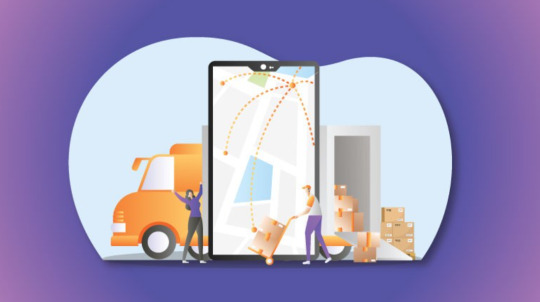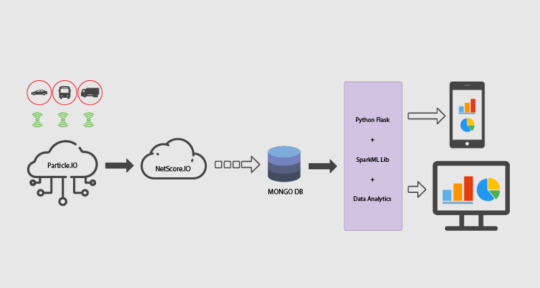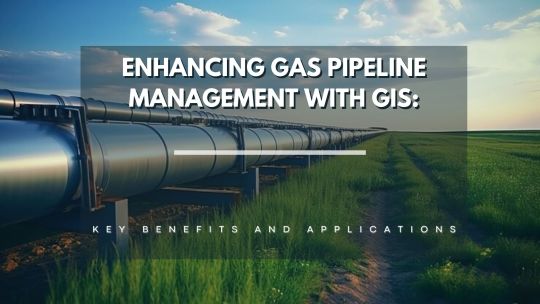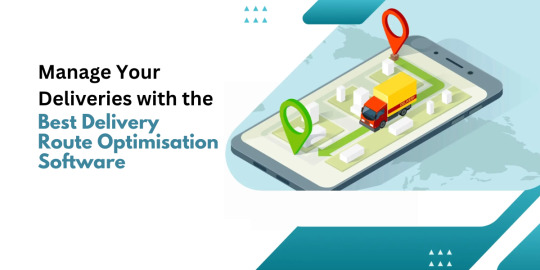#Route Management Software
Explore tagged Tumblr posts
Text
Route Management Software
Looking for a reliable solution to manage your delivery routes? Our Route Management Software is the answer. By leveraging cutting-edge technology and data-driven algorithms, our software enables you to create optimized routes, track vehicles in real-time, and make necessary adjustments on the fly. Enhance your logistical capabilities and meet customer demands with confidence by implementing our Route Management Software in your operations. Experience a seamless route planning experience like never before.
Visit: https://www.routesavvy.com/delivery-route-planner-software/
0 notes
Text
Is Your Delivery Software Intelligent?

As someone who has been involved in technology my entire career, my curiosity is always drawn to new ideas, concepts, and technology. Over the last couple of years, I keep hearing more about the “Internet of Things” (IoT) and how it is impacting today’s technology solutions. I thought I would use this writing to explore how it is now offering new frontiers for software developers to enhance their products through utilization of IOT.
For those of you that are not that familiar with IOT, Wikipedia offers a decent explanation. IoT is described as a network of physical objects—“things”—that are embedded with sensors, software, and other technologies for the purpose of connecting and exchanging data with other devices and systems over the Internet. As the concept has evolved, other technologies such as artificial intelligence (AI), real time analytics, embedded sensors, and big data mining, have become building blocks to build a new generation of solutions.
According to Fortune Business Insights, “The global IoT market size stood at 250.72 billion USD in 2019 and is projected to reach 1.4 trillion USD by 2027”. The impact has crossed a broad spectrum of industries with a few examples being consumer products, medical, transportation and logistics, manufacturing, and communication.
When NetScore first started the development of their Delivery Routing solution, they built in the standard features that allowed you to organize customer orders into delivery routes. The early edition included features such as:
Manual Route Planning
Signature capture
Viewing a map of the route plan
Re-assigning routes
Perform PO pickups
As the solution was deployed through the customer base, a common request was the ability to view the location of their trucks in real time. As the development team started exploring solutions, they realized that they could truly take the solution to the next level by incorporating IoT solutions as part of the offering. Leveraging the technology would solve tracking trucks in real time, but also extend to monitoring statistics regarding the vehicle, driver, traffic, and even sensors on the vehicle. The commitment to adding the capability to manage this type of information required revising the infrastructure of the product. While this was not a simple task, the value of enhancing the solution opened broad areas where the application could be expanded.
NetScore decided to partner with Particle who specializes in building sensors that can be leveraged by other developers to bring IoT to their solutions. They produce sensors for a wide variety of applications but offered a product line designed for the fleet management and transportation industry. Figure One shows the relationship of the Particle solution and its integration to NetScore.

Delivery operations are both capital and cost intensive to maintain, so companies are always looking for means to lower their costs and increase efficiency. Optimizing routes using real time traffic information can save fuel, driver time, and help maintain delivery schedules. Sensors that monitor temperature for refrigerated trucks can warn of a possible refrigeration failure that could jeopardize a full load of product. Monitoring vehicle speeds can help management determine whether trucks are being driven safely and help reduce accidents.
The value of the information being gathered increases over time as you now can use AI and Data Analytic tools to analyze the data. This will help spot trends, allow for predictive action, and better manage your assets. You are probably thinking about where all this data can be maintained since storage can be expensive. NetScore is integrating with Google Cloud Storage to provide an affordable option for storing your data. The integration will allow for seamless management of your data with the full ability to leverage your Data Analytics and reporting tools.
As I mentioned early on, making incremental improvements to how you plan routes, deploy your delivery assets and care for your delivery fleet, will add up over time. Deploying a solution that can leverage IoT technology, AI, and Data Analytics, will result in a quick return on investment. It will also increase your customer satisfaction and build a reputation for delivering your product efficiently and effectively. For more information on how NetScore is leveraging IoT in their Delivery Routing solution, please reach out to NetScore Account Executive.
#delivery routing for netsuite#vehicle routing software#ecommerce#fleet vehicle tracking#route management software
0 notes
Text

Route Management Software
Are you still managing routes manually? It’s time to start using route management software to seamlessly connect your fleet with a dispatching and scheduling platform so your back office team does not have to personally manage those tasks themselves. See here: https://transignllc.com/products/transport-and-route-management-software/
0 notes
Text

Streamline Deliveries with Route Management Software
Optimize your delivery process with our efficient delivery route management software. Plan the most time-saving routes, reduce fuel costs, and ensure timely deliveries. Take the hassle out of logistics and enhance customer satisfaction.
0 notes
Text
Route Planner Apps: Essential Features for Modern Fleet Optimization

Every delivery tells a story—of goods moving seamlessly from warehouses to doorsteps, of drivers navigating city streets and rural roads, and of businesses striving to exceed customer expectations every single day. In this fast-evolving landscape, route planning is no longer a back-office task; it’s the heartbeat of fleet operations.
Today’s customers demand speed, transparency, and reliability. For fleet managers, this means every route must be optimized not just for distance, but for real-time traffic, weather, and ever-changing delivery priorities. The right route planner app doesn’t just help your vehicles move—it powers your entire business forward, ensuring that every delivery is a promise kept.
Evolution of Route Planning: From Paper Maps to AI
Not long ago, route planning meant highlighters, sticky notes, and a lot of guesswork. Dispatchers would spend hours poring over maps, trying to predict traffic and minimize mileage by hand. As delivery windows shrank and customer expectations soared, this approach became unsustainable. Enter digital route planners—first as simple mapping tools, now as AI-driven platforms that recalculate hundreds of routes in seconds, factoring in real-time data and business constraints.
Beyond the Basics: What Modern Fleets Really Need
A modern route planner app is more than a digital map. It’s an operational command center—an intelligent engine that ingests real-time data, predicts disruptions, and continuously optimizes every delivery run. The best solutions orchestrate your entire delivery ecosystem, ensuring every parcel, vehicle, and driver is part of a finely tuned operation.
Looking to boost delivery speed and reduce operational costs in grocery logistics? Discover how AI-powered route optimization drives faster, smarter deliveries.
8 Essential Features for Modern Fleet Optimization
In today’s fast-paced logistics environment, optimizing fleet operations requires more than just basic route planning. Modern fleet optimization demands a comprehensive set of intelligent features that not only improve efficiency but also provide real-time visibility, predictive insights, and seamless integration across systems. These capabilities empower fleet managers to reduce costs, enhance driver safety, and deliver superior customer experiences while adapting dynamically to changing conditions. Let’s explore the essential features that define a cutting-edge route planner app for modern fleets.
1. Real-Time Traffic and Weather Integration
Modern fleets operate in unpredictable environments. Leading route planner apps pull in live traffic and weather data, allowing dispatchers and drivers to reroute instantly and avoid bottlenecks. This feature can be the difference between on-time and late deliveries, especially in busy urban areas or during peak seasons.
2. AI-Driven Route Optimization
Artificial intelligence (AI) is the backbone of next-generation route planning. AI-powered route optimization analyze historical delivery data, current conditions, and even driver behavior to generate the most efficient routes. They adapt in real time, learning from every trip to improve future performance and handle complex constraints like time windows, vehicle capacities, and customer preferences.
3. Multi-Vehicle and Multi-Stop Support
For businesses managing dozens or hundreds of vehicles, the ability to plan for multiple vehicles and stops simultaneously is critical. Advanced apps optimize entire fleets at once, balancing workloads and minimizing empty miles—vital for couriers, field service teams, and large-scale logistics providers.
As hyperlocal delivery demands continue to grow, optimizing routes becomes critical to stay competitive. Learn how AI route optimization boosts speed and efficiency.
4. Parcel-Level Precision
Today’s customers expect more than just a delivery—they want precise ETAs, real-time updates, and assurance that their specific package will arrive as promised. Leading route planners enable parcel-level tracking, proof of delivery, and automated customer notifications, elevating the delivery experience.
5. Automated Dispatch and Load Planning
Manual dispatching is slow and error-prone. Automated tools assign jobs based on vehicle location, capacity, and driver availability, ensuring every load is optimized and every driver’s time is used efficiently. This reduces operational overhead and helps fleets scale without adding more staff.
6. Seamless Integration with Fleet and Logistics Platforms
A route planner is most powerful when it connects with your other business systems—Last Mile TMS, WMS, order management, telematics, and more. Open APIs and robust integration capabilities ensure your route data flows effortlessly across the organization, enabling true end-to-end visibility and control.
Emerging markets can gain a competitive edge by adopting smart tools tailored to their unique delivery challenges. Explore how AI transforms last-mile delivery in the food and grocery sector.
7. Mobile and Cloud-Based Accessibility
Drivers and managers need access to route data wherever they are. Cloud-based platforms and mobile apps provide real-time updates, allow drivers to report issues instantly, and empower managers to monitor performance from anywhere.
8. Live Feedback Loops
The best route planners don’t just push out plans—they listen. By integrating driver feedback, vehicle telematics, and customer ratings, these systems continuously refine their algorithms, learning from every delivery to make the next one better.
Industry-Specific Innovations
No two fleets are the same. Route planning Software/apps now offer industry-specific features, whether it’s temperature-controlled routing for pharmaceuticals, dynamic zoning for food delivery, or compliance checks for hazardous materials. Leading platforms tailor their solutions to logistics, field services, long-haul trucking, and more, ensuring every unique operational challenge is addressed.
Measuring Impact: Real-World Results
The benefits of advanced route planning are tangible and immediate. Companies report:
● Up to 20% reduction in fuel costs and mileage
● Faster deliveries and improved on-time performance
● Enhanced customer satisfaction through accurate ETAs and proactive communication
● Lower operational costs thanks to automation and fewer manual interventions
Case in Point:
A mid-sized courier service implemented AI-driven route optimization and saw missed deliveries drop by 30%, while customer ratings improved within weeks.
Future-Proofing Your Fleet
What’s next for route planner apps? Expect even deeper AI integration, with predictive analytics forecasting demand surges and traffic patterns days in advance. Sustainability will take center stage, with green routing options that minimize emissions. And as autonomous vehicles enter the mainstream, route planners will evolve to orchestrate mixed fleets of human and robotic drivers.
Conclusion: Choosing the Right Route Planner App
Don’t settle for a static checklist. The right route planner app is a strategic partner—one that learns, adapts, and grows with your business. Look for solutions that combine AI intelligence, real-time data, seamless integration, and industry-specific flexibility. In today’s logistics world, the smartest route isn’t just the shortest—it’s the one that keeps your fleet, your customers, and your business moving forward.
About nuVizz
nuVizz is recognized as a leader in AI-powered route optimization and last-mile delivery management, offering advanced solutions that help businesses reduce delivery delays, boost efficiency, and gain real-time visibility across their fleet. With proven technology trusted by enterprises worldwide, nuVizz empowers logistics teams to stay ahead in a rapidly evolving industry.
#route optimization#last mile delivery#last mile tms#routing software#last mile delivery technology#route planning software#tms software#logistics#lastmiletms#logistics solutions#fleet management
0 notes
Text
Boost Business Communication 4X with MCUBE’s Smart Cloud Contact Center
See how MCUBE powers smart conversations to multiply your business communication efficiency by 4X. Experience seamless customer engagement and easy scaling with cloud contact center solutions designed for modern businesses.
#cloud contact center#business communication#cloud telephony#MCUBE contact center#smart call management#IVR solution#call routing#remote support system#cloud-based customer service#scalable contact center#contact center software India#call center automation#virtual call center#customer engagement#inbound and outbound calling solution
0 notes
Text
oh my god i don't speak to my dad anymore cuz hes nutty but i know what he does for a living
and musk is currently pulling a "the software govs use is 50 years old which means there can be no advances"
and that's..... that's what my dad does for a living, he gets paid 500-1k an hour to make software that specifically communicates with old legacy software cause he's a 90s dev who knows the old languages still and it's more efficient to hire a freak who knows how to make something to bridge between the old and new programs than to fully trash the old system
like there's literally consultants that get hired for that specific purpose and as a software guy musk KNOWS this
#personal#im losing a LOT of money and decent work connections cause its less stressful than dealing with the crazy man#who literally called my professors at their personal art studios =_=#but ummm???? um??? hes like a low level linkedin influencer lmfao ._.#for software and THIS specific subject matter#the thing ive been getting raises on at work is making scripts to communicate between adobe software with the spreadsheets our#PLM system at work spits out....to automate a bunch of artwork thru libraries.........????#the way my boss gets me to not leave is by giving me /coolmathgames.com/ as a treat basically#and more money for being able to solve /coolmathgames.com/#i work in corporate and one of our order management systems specifically gets routed thru a windows vista virtual machine#cause they dont feel the need to fix....cuz if its not broke#just make the new things that bridge between the two systems?????#instead of having to transfer over decades of a database it makes 0 sense#idk man im rlly frustrated online cuz one of my dads patents is for a legacy speech to text software#(and the other is for a logistics/shipment thing)#like he wasnt the lead on either project but the speech to text specifically is irritating cuz theres#things ppl call 'AI' and im like....thats a buzzword this is litcherally 90s/00s tech and ive been in the office it was made lol
1 note
·
View note
Text
Route Management Software
Enhance your logistics strategy with our innovative Route Management Software. This comprehensive solution is packed with convenient features to help you create efficient delivery routes, improve delivery times, and boost customer satisfaction. Our software is designed to meet your needs and help you take your route planning to the next level.
Visit: https://www.routesavvy.com/delivery-route-planner-software/
0 notes
Text
youtube
Are slow approvals, negotiation headaches, and managing channel partners slowing down your sales process? RSoft Realtors Robot is here to change that!
#Real estate CRM#Sales automation software#Streamline real estate sales#RSoft Realtors Robot demo#Real estate lead scoring#Smart lead routing for real estate#Real estate approval process software#Channel partner management CRM#Boost real estate sales productivity#AI for real estate sales#Realtors CRM tool#Sales cycle automation real estate#Youtube
0 notes
Text

Enhancing Gas Pipeline Management with GIS: Key Benefits and Applications
In the energy and utilities sector, gas pipeline management is complex, requiring precision, safety, and a clear strategy for both existing infrastructure and future expansion. Geographic Information Systems (GIS) have revolutionized pipeline management by providing a spatially accurate, data-rich view of assets. From asset management and leak detection to route planning and demand forecasting, GIS is becoming indispensable for gas companies. This blog delves into the ways GIS transforms gas pipeline management, delivering benefits across safety, efficiency, cost-saving, and planning.
#benefits of using gis for gas pipelines#ensuring gas pipeline safety with gis tools#gas network analysis#gas pipeline asset management#gas pipeline gis mapping services#gas pipeline leak detection using gis#gas pipeline management in gis#gas pipeline mapping software#gas pipeline monitoring tools#gas pipeline risk assessment#gis applications in energy sector#gis for gas pipeline monitoring#gis for infrastructure management#gis in oil and gas industry#gis pipeline maintenance software#gis pipeline monitoring system#gis pipeline route planning#gis software for gas pipeline route optimization#victoryofgoodoverevil#gis solutions for pipeline maintenance and monitoring#gis-based pipeline integrity management#pipeline data management#pipeline geographic information systems#pipeline management solutions#remote sensing for gas pipelines#spatial analysis for gas pipelines#spatial data for gas pipelines
0 notes
Text
How Do I Choose an Inventory Management System?
Choosing the right inventory management system (IMS) is crucial for optimizing your supply chain, improving accuracy, and boosting efficiency. Here are key steps and factors to consider when selecting an IMS:
Define Your Needs and Goals:
Identify specific challenges you want the IMS to address (e.g., stockouts, tracking errors, slow turnover).
Set clear objectives for the IMS, like improving inventory accuracy, reducing costs, or enhancing visibility.
Consider your company size, product types, and order volume to understand the level of functionality needed.
Look for Key Features:
Real-Time Tracking: Essential for accurate, up-to-the-minute visibility of inventory across multiple locations.
Order Management: Ensure it can handle orders from multiple channels, including e-commerce, wholesale, or retail.
Barcode/RFID Scanning: Automates data entry, reduces errors, and speeds up receiving, picking, and packing.
Reporting and Analytics: Look for advanced reporting capabilities to track inventory trends, sales performance, and forecasting.
Integrations: Ensure compatibility with your existing systems, such as accounting, ERP, CRM, or e-commerce platforms.
Assess Ease of Use and Scalability:
User-Friendly Interface: The system should be intuitive and easy to use, minimizing the need for extensive training.
Scalability: Choose a system that can grow with your business. It should easily adapt to increased order volumes, additional warehouse locations, or expanded product lines.
Consider Automation Capabilities:
The IMS should automate time-consuming tasks, like updating stock levels, sending reorder alerts, and generating purchase orders. Automation can help reduce manual errors and free up staff for higher-level tasks.
Check Cloud-Based vs. On-Premises Options:
Cloud-Based Systems: These offer remote access, regular updates, and typically lower upfront costs, which makes them ideal for growing or multi-location businesses.
On-Premises Systems: These may provide greater control and security for large businesses with dedicated IT resources, though they usually come with higher installation and maintenance costs.
Evaluate Cost and Budget:
Upfront vs. Subscription Costs: Consider whether a subscription-based or one-time payment model fits your budget better.
Total Cost of Ownership: Look at ongoing costs like maintenance, updates, support, and training. Don’t forget any hardware costs (e.g., barcode scanners, RFID devices).
Review Customer Support and Training Options:
A reliable support team is essential, especially during initial setup and as you scale. Check for availability of training materials, tutorials, and whether support is included or an added cost.
Look for Customization and Flexibility:
Choose an IMS that allows you to customize workflows, reports, and dashboards to align with your business’s unique needs. Some systems offer add-ons or modular features, letting you pay only for what you need.
Evaluate Vendor Reputation and Reviews:
Research reviews and case studies to understand how well the IMS has worked for similar companies. Customer feedback provides valuable insights into software performance, reliability, and user satisfaction.
Test the System with a Demo or Free Trial:
A hands-on trial helps you assess the system’s fit for your operations. Use this time to explore features, test ease of use, and verify that it aligns with your workflow.
By following these steps, you’ll be well-equipped to select an inventory management system that aligns with your business needs, supports growth, and ultimately improves efficiency in managing inventory.
Our Software Services:
Quotation Software | Sales Order Management Software | Purchase Order Management Software | Invoicing Software | Pick Pack Ship Software | Payment Processing Software
#quotation software#inventory software#inventorymanagementsystem#Inventory management system#inventorysoftware#bmobile route software#bmobileroutesoftware#united states#inventory management#inventorymanagementsoftware
0 notes
Text
Fleet Route Optimization and Real-Time Monitoring

In today’s busy logistics and transportation industry, businesses feel great pressure. They must streamline operations, cut costs, and meet customer demands.
Customers want faster and more reliable deliveries. Optimizing fleet routes and monitoring fleets in real-time are key to reaching these goals.
nuVizz offers advanced solutions that change how organizations manage their fleets. As the need for same-day deliveries grows, old fleet management methods are not enough. Modern fleet management systems and Last Mile transportation management solutions help businesses stay ahead in a competitive market.
What Is Fleet Routing?
At its core, fleet routing involves strategically planning the most efficient paths for a fleet of vehicles. This process considers multiple factors such as vehicle capacity, delivery time windows, and real-time traffic conditions. The ultimate objective? To minimize travel time, fuel consumption, and delivery costs while maximizing efficiency.
In the digital age, routing optimization tools from nuVizz make this process quicker, smarter, and more accurate. By using real-time data analytics, businesses can quickly change routes. This helps reduce delays, solve traffic problems, and meet last-minute customer requests. This dynamic approach ensures timely deliveries and seamless fleet operations.
How nuVizz Fleet Management Systems Optimize Operations
A robust fleet management system lies at the heart of operational excellence. nuVizz’s solutions consolidate critical fleet functions into a single, centralized platform, enabling businesses to track performance, monitor driver behavior, and optimize delivery routes.
Real-time tracking and visibility ensure that fleet managers can oversee operations effortlessly.
Route optimization tools enhance vehicle utilization while minimizing idle time.
Data-driven insights empower businesses to make informed decisions on fuel usage, maintenance schedules, and overall fleet performance.
These systems work well with real-time fleet tracking software. They give complete visibility across the supply chain. With nuVizz, businesses can elevate their fleet management to new heights.
The Role of Real-Time Monitoring in Fleet Management
Real-time fleet monitoring is essential for modern logistics. It offers up-to-the-minute insights into vehicle locations, delivery statuses, and overall fleet performance. With nuVizz’s vehicle tracking systems, fleet managers can:
Pinpoint vehicle locations instantly.
Adjust routes dynamically to counter delays or traffic disruptions.
Ensure timely deliveries and meet customer expectations.
For last-mile delivery, real-time monitoring is indispensable. It helps businesses deal with problems like city traffic jams or sudden route changes. This ensures that deliveries arrive on time at the customer’s door.
Advanced Route Planning and Optimization Tools
nuVizz’s route optimization solutions leverage cutting-edge algorithms and AI-powered tools to identify the most efficient routes. By considering variables such as distance, traffic patterns, and time constraints, these tools enable:
Reduced fuel consumption and operational costs.
Improved fleet productivity.
Enhanced customer satisfaction through on-time deliveries.
Route management software plays a crucial role in streamlining delivery operations. With real-time adaptability, businesses can respond to changing conditions instantly, ensuring maximum efficiency and minimum disruption.
Optimizing Last-Mile Deliveries with nuVizz
The last mile represents the most challenging and cost-intensive phase of the delivery process. nuVizz addresses these challenges with innovative solutions that:
Utilize real-time data for precise last-mile route planning.
Reduce delivery times and associated costs.
Enhance customer experience through real-time updates and accurate ETAs.
By incorporating route optimization tools into their operations, logistics providers can significantly lower expenses while exceeding customer expectations.
The nuVizz Advantage: Real-Time Monitoring and Optimization
Adopting nuVizz fleet management systems comes with a suite of benefits, including:
Enhanced operational efficiency:
Optimize routes, reduce idle time, and maximize vehicle utilization.
Improved customer satisfaction:
Deliver accurate ETAs and real-time delivery updates.
Cost reduction:
Cut down on fuel costs and improve resource allocation.
Driver safety and compliance:
Monitor and enhance driver behavior to meet safety standards.
Flexibility and adaptability:
React to traffic, weather, or customer changes in real time.
Conclusion
As logistics challenges become increasingly complex, solutions like nuVizz’s fleet route optimization and real-time monitoring tools empower businesses to remain competitive. By integrating advanced fleet management systems, companies can enhance their operational efficiency, reduce last-mile delivery costs, and improve customer satisfaction.
nuVizz is a leader in modern logistics. It offers advanced last-mile TMS and fleet management solutions. These solutions help businesses succeed in a changing market.
About nuVizz
nuVizz is a top provider of Last Mile Transportation Management Systems (TMS). These systems help make logistics easier and improve delivery efficiency. nuVizz provides complete solutions for real-time tracking, route planning, and delivery management. This helps businesses use their resources better, lower costs, and meet customer needs.
#fleet management solution#fleet route optimization#last mile solutions#last mile TMS#Route Planning Software
0 notes
Text

Discover the key features of route optimisation in a milk delivery solution, including manual and auto route planning, live tracking, driver management, and more. Streamline your deliveries today. Book a Free Demo with Milk Delivery Solutions to enhance your business efficiency!
#Route Optimisation#milk delivery solutions#milk delivery software#milk delivery management software
0 notes
Text
0 notes
Text
Manage Your Deliveries with the Best Delivery Route Optimisation Software

Did you know that businesses using Delivery Route Optimisation Software can cut their fuel costs by up to 30% and increase delivery efficiency by as much as 25%? Efficient route planning is crucial for any delivery-based business, and the right software can make all the difference. In this guide, we’ll explore how to manage your deliveries effectively with the best Delivery Route Optimisation Software, ensuring your operations are smooth, cost-effective, and customer-focused.
Why Route Optimisation Matters?
Route optimisation is more than just finding the quickest path from A to B. It involves planning routes that minimise travel time, reduce fuel consumption, and improve overall delivery efficiency. Effective route optimisation can:
Reduce Operational Costs: By minimising fuel consumption and vehicle wear, you lower overall expenses.
Enhance Delivery Speed: Optimised routes ensure that deliveries are made promptly, increasing customer satisfaction.
Improve Resource Utilisation: Efficient planning helps in better use of your fleet and manpower.
Reduce Environmental Impact: Fewer miles driven means lower carbon emissions, contributing to a greener business model.
What is Delivery Route Optimisation Software?
Delivery Route Optimisation Software is a tool designed to automate and streamline the process of planning delivery routes. It helps businesses identify the most efficient routes based on various factors, including traffic conditions, delivery windows, and vehicle capacity. Key functionalities of such software include:
Automated Route Planning: Automatically generates optimal routes, saving time and reducing manual effort.
Real-Time Traffic Updates: Adjusts routes based on current traffic conditions to avoid delays.
Dynamic Re-Routing: Quickly recalculates routes in case of unexpected changes or disruptions.
Integration with Other Systems: Connects with your existing systems for seamless operation and data sharing.
Key Features to Look For
When selecting the best Delivery Route Optimisation Software, consider these key features:
Ease of Use: The software should be user-friendly, with an intuitive interface that simplifies route planning.
Customisation Options: Look for software that allows you to tailor routes based on your specific needs, such as delivery windows and vehicle types.
Scalability: Choose a solution that can grow with your business, handling increasing numbers of deliveries and routes.
Integration Capabilities: Ensure the software integrates well with other systems you use, like GPS, CRM, and fleet management tools.
How to Choose the Best Delivery Route Optimisation Software?
Selecting the right software involves evaluating your specific needs and comparing options. Here’s how to choose:
Assess Your Requirements: Identify the features that are crucial for your business, such as real-time updates or advanced analytics.
Compare Solutions: Look at different software options, comparing their features, pricing, and customer reviews.
Request Demos: Try out demos or free trials to get a feel for how the software works and whether it meets your needs.
Check for Support: Ensure the software provider offers reliable customer support and training resources.
Benefits of Using Delivery Route Optimisation Software
Using Delivery Route Optimisation Software offers several benefits:
Cost Savings: Reduces fuel and maintenance costs by optimising routes and vehicle usage.
Increased Efficiency: Speeds up deliveries and reduces the time spent on route planning.
Better Customer Service: Ensures timely deliveries and provides customers with accurate ETAs.
Enhanced Data Insights: Provides valuable insights into delivery performance and operational efficiency.
Tips for Maximising Your Software
To get the most out of your Delivery Route Optimisation Software, follow these tips:
Regularly Update Your Data: Keep your address and delivery information up-to-date to ensure accurate route planning.
Monitor Performance: Track key metrics and performance indicators to gauge the effectiveness of your routes.
Leverage Analytics: Use the software’s analytics features to identify trends and make data-driven decisions.
Train Your Team: Ensure your staff are well-trained in using the software to maximise its benefits.
Common Challenges and How to Overcome Them
Here are some common challenges with route optimisation and how to tackle them:
Data Accuracy Issues: Ensure your data is accurate and up-to-date to avoid routing errors. Regularly review and clean your data.
Integration Difficulties: If integrating with other systems is challenging, seek support from the software provider or consider custom integration solutions.
Adapting to Changes: Be prepared for unexpected changes, such as traffic disruptions or delivery cancellations, by using software with dynamic re-routing capabilities.
Read More: Route Management for Small Water Delivery Businesses
Conclusion
Managing deliveries with the best Delivery Route Optimisation Software can significantly enhance your operational efficiency, reduce costs, and improve customer satisfaction. By choosing the right software and leveraging its features, you can optimise your routes, streamline your processes, and drive your business forward. Embrace the power of delivery route optimisation to stay competitive and deliver exceptional service.
#best Delivery Route Optimisation Software#Delivery Route Optimisation Software#water delivery management software#waterdeliverysystem#delivery management software
0 notes
